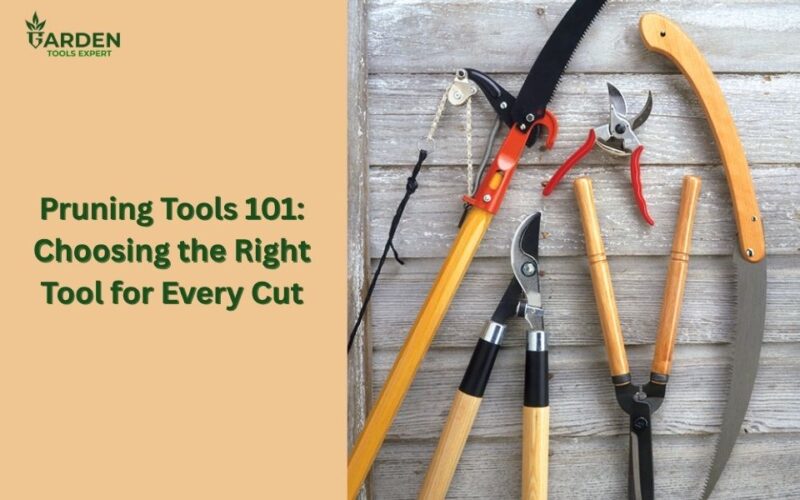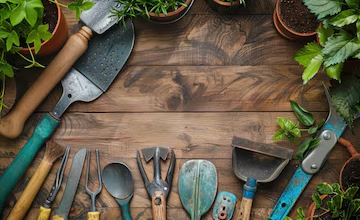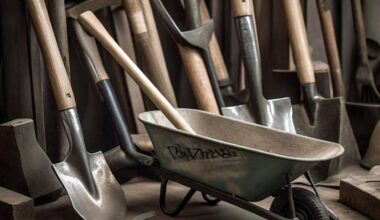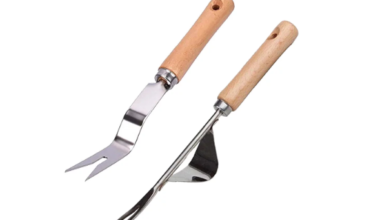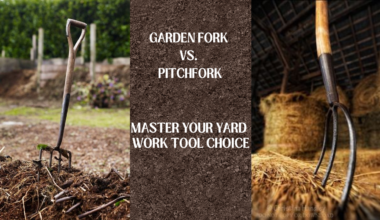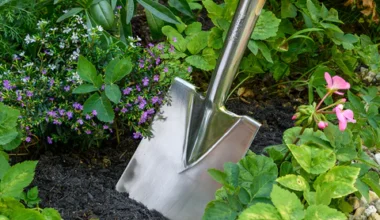Here is a mistake I hope you never make: choosing the wrong tool for a cut.
Pruning is a key part of keeping your garden healthy and beautiful. But the secret isn’t just in how often you prune; it’s in the pruning tools you choose. Using the wrong pruning tools can harm your plants, slow down growth, or cause costly damage.
This guide will walk you through the basics of pruning tools, what cuts they handle best, and how to pick the right tool for every plant. Knowing your tools inside and out isn’t just for the experts; it’s the secret to safer and productive gardening at any level.
Understanding the Basics of Pruning
Why Proper Pruning Matters
Correct pruning helps your plants grow strong and healthy. It promotes better flowering, fruiting, and even keeps pests and diseases away.
Think of pruning as giving your plants a new look. When pruning is done correctly, it enhances the appearance of your garden and prevents plants from becoming overgrown. This leads us to the next topic of interest, the different types of pruning cuts.
Different Types of Pruning Cuts
Knowing the types of cuts is crucial for selecting the right tools. Here are the main types:
- Pinching: Small buds or soft growth are pinched off for a tidy look.
- Thinning: Removes entire branches to improve airflow and reduce crowding.
- Heading: Cut back a branch to a bud to encourage bushier growth.
- Reduction: Removes larger parts of branches to control size or shape.
Each type of cut requires different tools for a clean, healthy finish. In this light, knowing when to prune also becomes very essential.
When to Prune
Timing is everything. Many plants do best with pruning in winter or early spring before new growth begins. Signs you need to prune include dead or broken branches, overcrowding, or plants that look too leggy. Regular checks help keep your garden in top shape.
Types of Pruning Tools and Their Uses
Hand Pruners (Bypass Shears or Trowel)
These are the most common tools for small cuts. Hand pruners are used to trim small branches, shape flowering shrubs, and harvest fruits.
Pruners with sharp blades, a comfortable grip, and a size that fits your hands are recommended. Garden tools expert also recommend sharpening and replacing blades when they dull to avoid crushing tissue.
Lopping Shears and Pole Pruners
If you need to cut branches up to 2-3 inches thick, lopping shears are your best bet. They come with long handles for leverage and reach.
For higher branches that are hard to access, pole pruners extend your reach safely. Choosing extendable tools helps prevent accidents and saves you from climbing ladders.
Pruning Saw and Bow Saw
Thicker branches over 2 inches need a saw. Folding saws and fixed-blade models work well. Curved blades excel at following the natural shape of branches, making cuts smoother.
Always use a saw with a gentle sawing motion to avoid damaging the plant. Proper technique minimizes effort and ensures a clean cut.
Pruning saws are specifically designed for trimming and shaping trees, shrubs, and woody plants. They feature a narrow, curved blade that allows for precise cuts in tight spaces.
Bow saws are versatile tools with a distinctive “bow” shape, consisting of a narrow blade stretched between two handles.
This design provides excellent cutting leverage and makes the bow saw suitable for various tasks, like pruning, cutting logs, and clearing branches. The blade of a bow saw is replaceable, allowing for flexibility in choosing the appropriate blade for different cutting applications.
Both pruning saw and bow saw are essential garden saws and are also part of the pruning tools you cant underestimate
Electric and Gas-Powered Pruning Tools
For large projects, like orchard work or big trees, powered tools save time and energy. Electric pruning saws and gas pruners handle tough jobs fast. Ensure you always use appropriate safety gear such as gloves and eye protection.
Additionally, make it a habit to clean and inspect your tools regularly. Proper maintenance is essential for extending their lifespan and ensuring optimal performance
Specialized Tools
Some tasks require special tools like
Grafting and Budding Tools
These are essential for orchard work or plant nurseries. Grafting knives, saws, and budding tools help join plants together. They allow for better fruit production and plant health.
Bonsai and Delicate Plant Pruning Tools
Fine scissors and tiny shears help keep miniature trees and delicate plants looking perfect. Precision is key for maintaining shape without damaging the plant.
Hedge Shears
Designed for trimming and shaping bushes and hedges, these shears often have long blades and adjustable handles. Topiary artists rely on them for the precise shaping of decorative plants.
Factors to Consider When Choosing Pruning Tools
- Durability of materials like steel and high-quality blades
- Comfort and design for easy handling
- Size and weight that suit your strength
- Safety features to prevent accidents
- Cost balanced with durability and performance
Choosing the Perfect Tool for Each Plant and Task
Small Shrubs and Flowering Plants
Use lightweight hand pruners or secateurs. These tools allow you to make precise cuts without damaging the plant’s delicate tissue. Focus on shaping and removing dead leaves or small branches.
Fruit Trees and Edible Gardens
Opt for bypass pruners to make clean cuts that promote quick healing. For thicker branches, loppers are perfect. Always aim to minimize damage to keep your fruit producing smoothly and avoid disease.
Large Trees and Hard-to-Reach Branches
Invest in extendable pole pruners and pruning saws. Remember, safety is paramount—wear protective gear and plan your cuts carefully. Use steady, controlled motions to avoid accidents and damage.
Deadheading and Garden Maintenance
Light, quick cuts suit hand pruners or scissors. These are perfect for removing spent flowers and maintaining a tidy look. Regular maintenance keeps your garden vibrant and inviting.
Tool Maintenance and Safety Tips
How to Keep Your Tools in Top Shape
Clean your tools after each use to prevent rust. Sharpen blades regularly; dull tools cause torn tissue, which weakens plants. Rubber or oil your tools to prevent corrosion and ensure they work smoothly for years.
Safe Pruning Practices
Always wear gloves and eye protection—thorns and branches can cause injuries. Maintain a strong stance and cut away from your body. Use controlled movements, and never force a tool through a branch.
Free Tip: Dull blades or loose handles mean it’s time for new tools. Dull blades crush rather than cut, leading to plant damage. Investing in high-quality tools saves money and effort over time. You can always buy your garden tools from an online shop for convenience.
Conclusion
Matching the right pruning tools with specific tasks helps keep your plants healthy and your garden looking its best.
Regular tool care and safety practices not only protect you but also extend your tools’ life. Remember, spending a little time choosing and maintaining your pruning tools pays off with healthier plants and easier gardening.
Upgrade your garden toolkit today, and your garden will thank you. Proper pruning tools lead to better cuts, faster work, and happier plants. Enjoy happy pruning!

